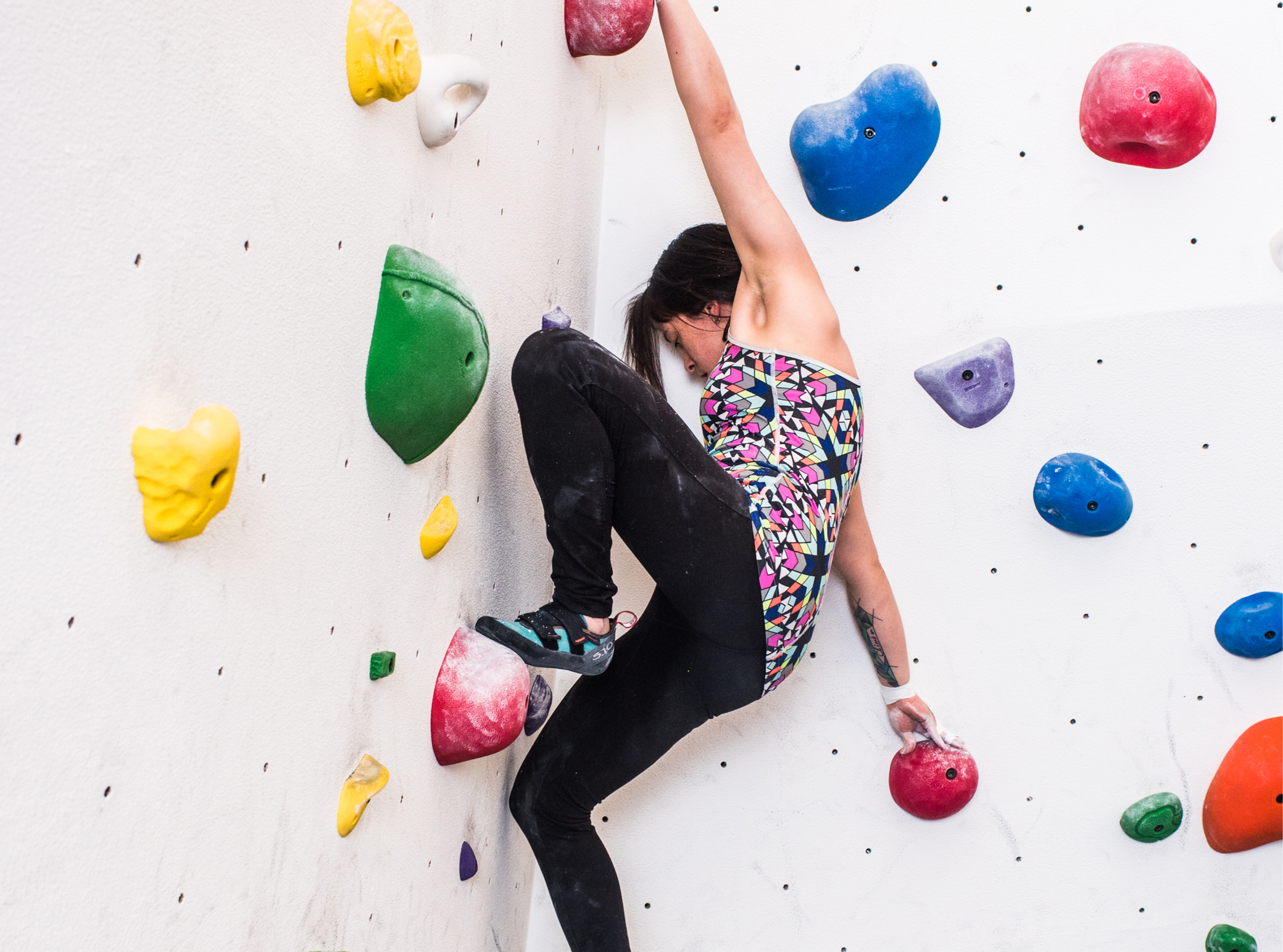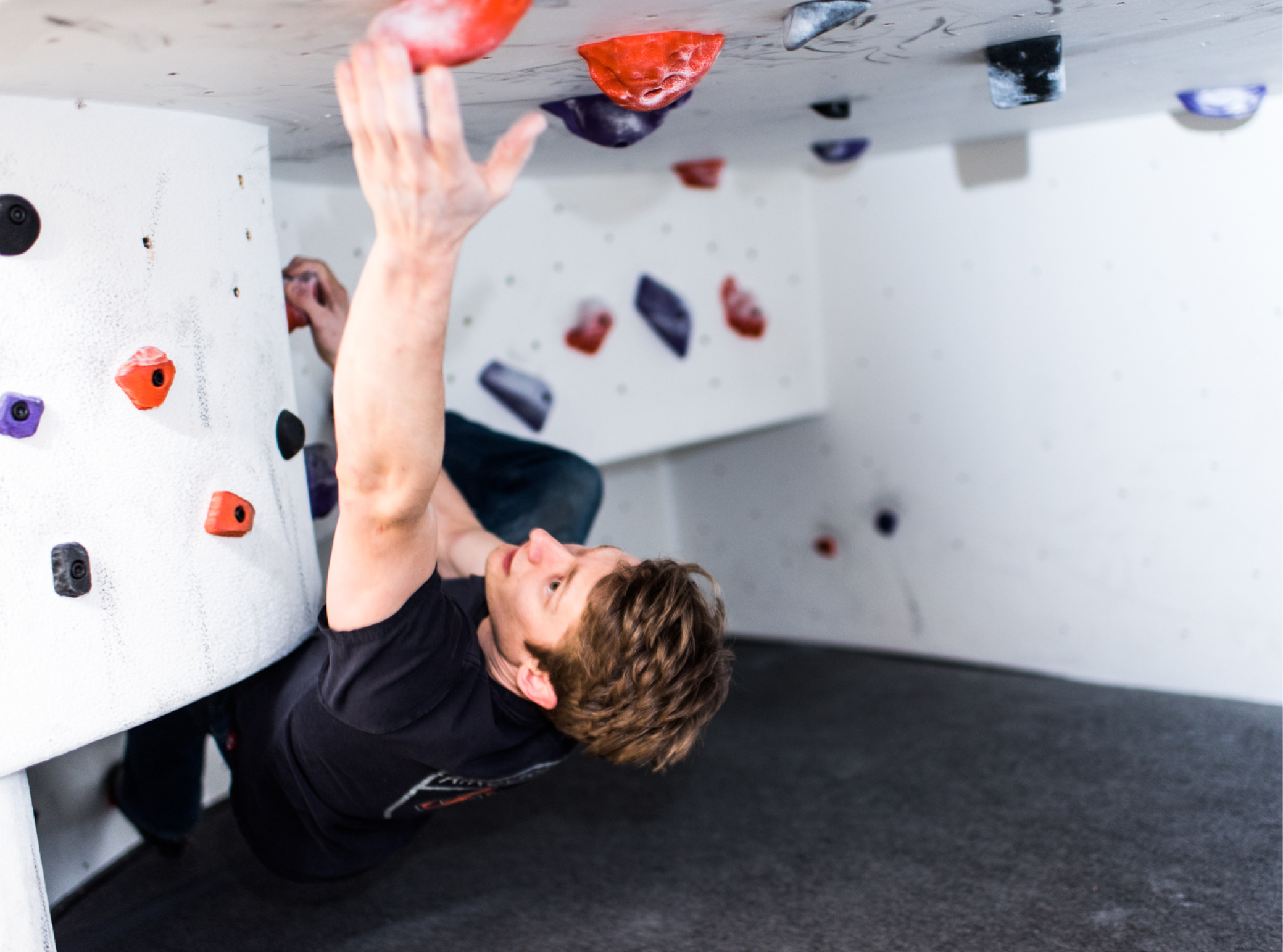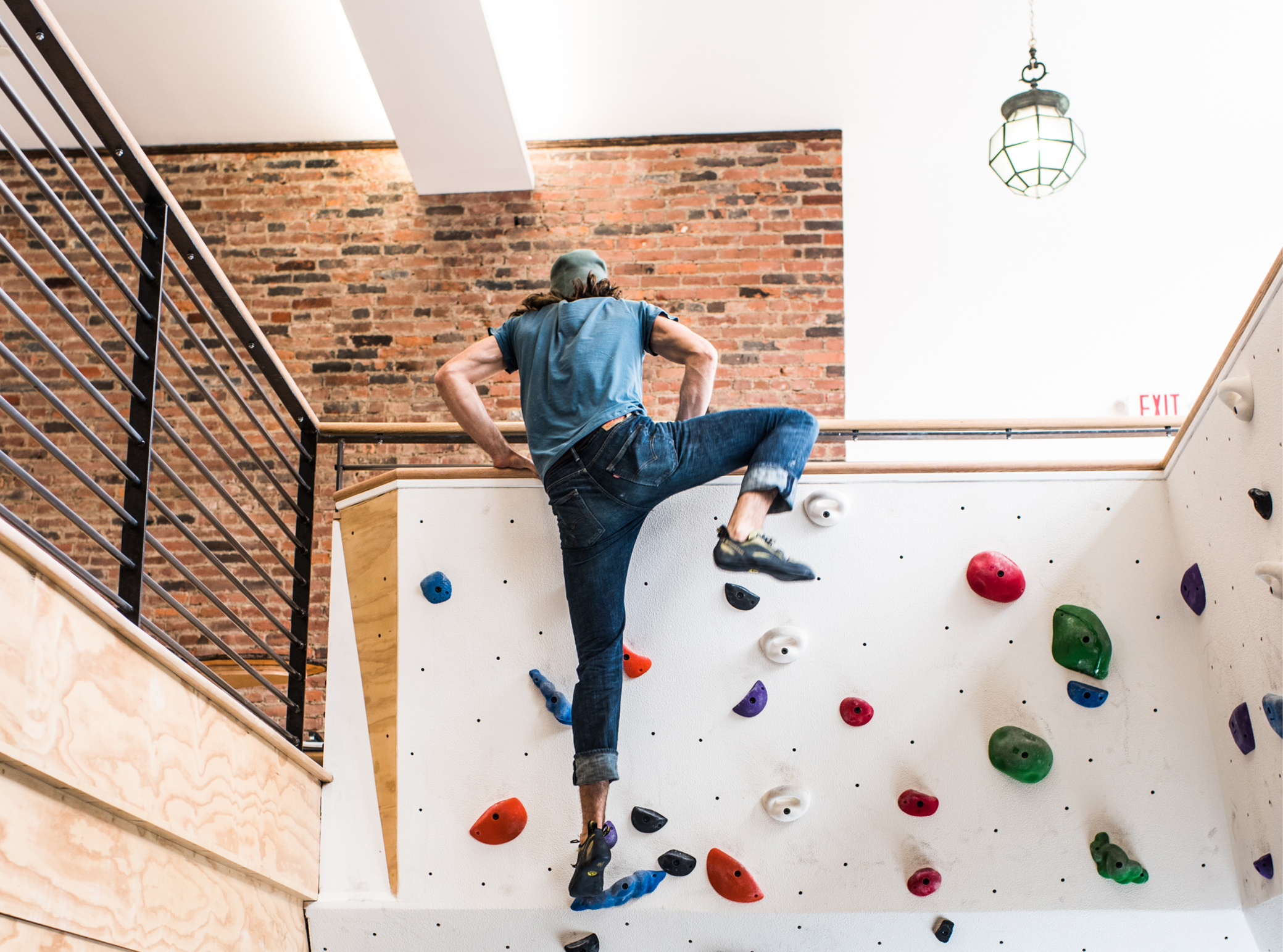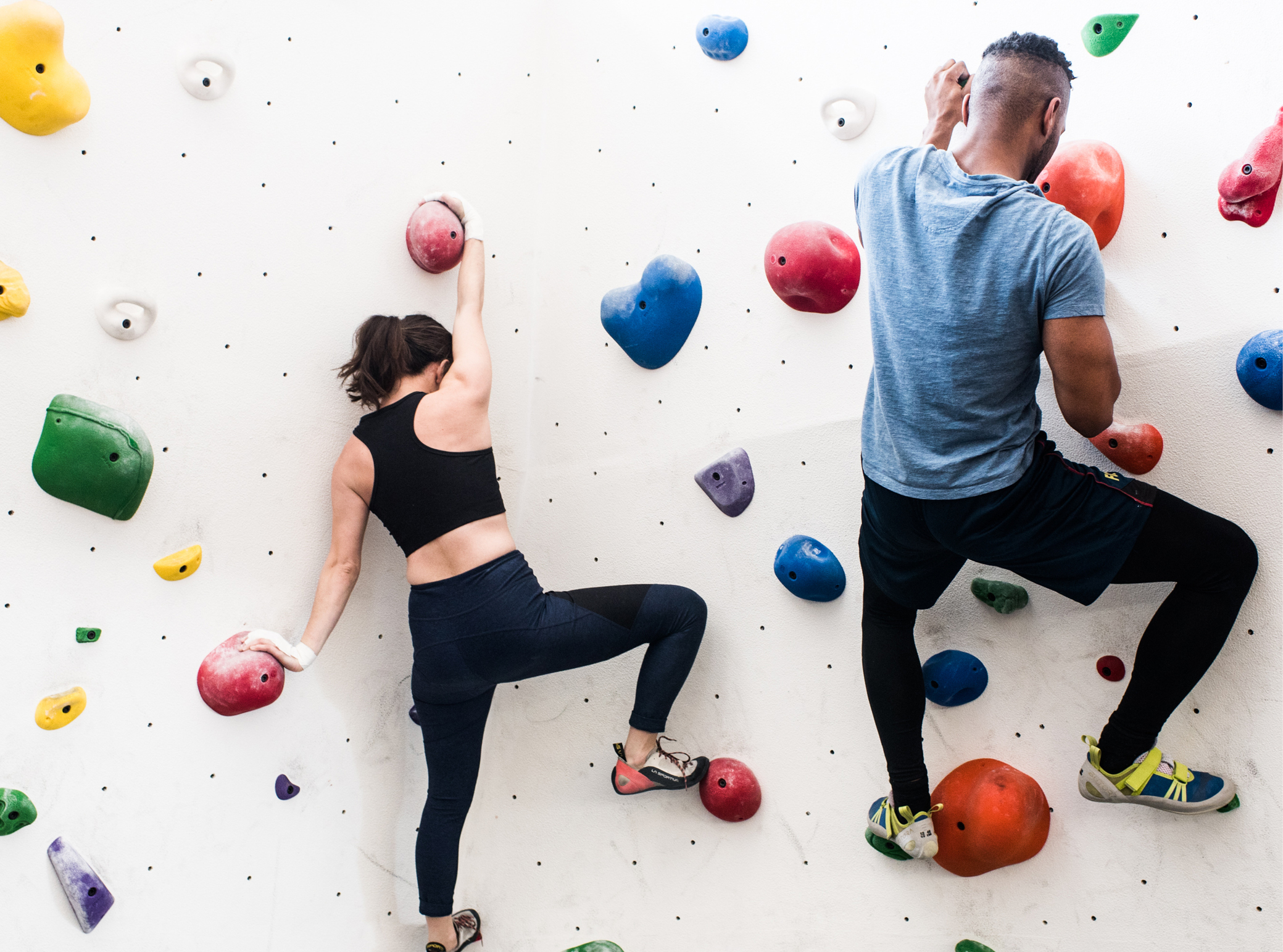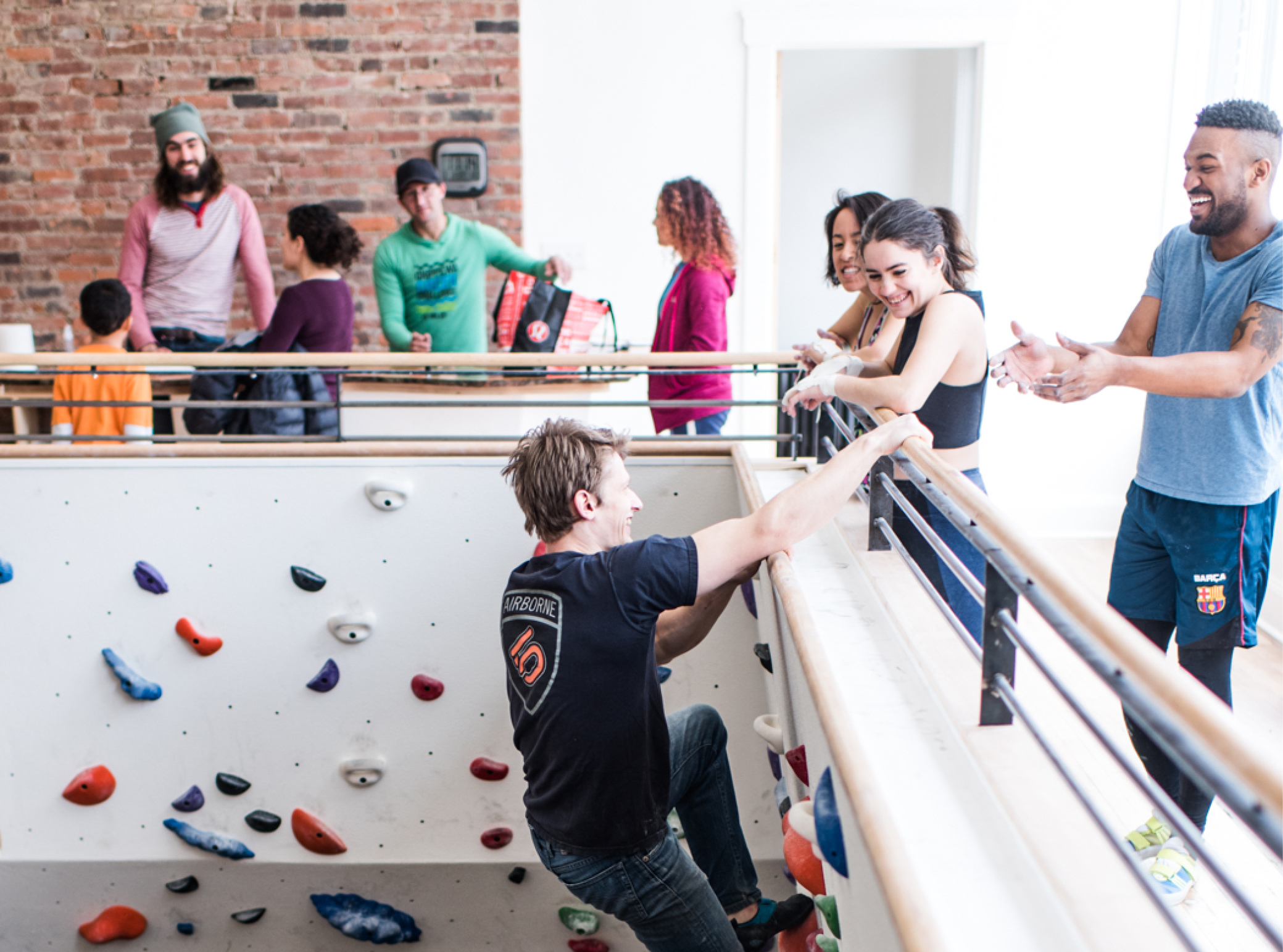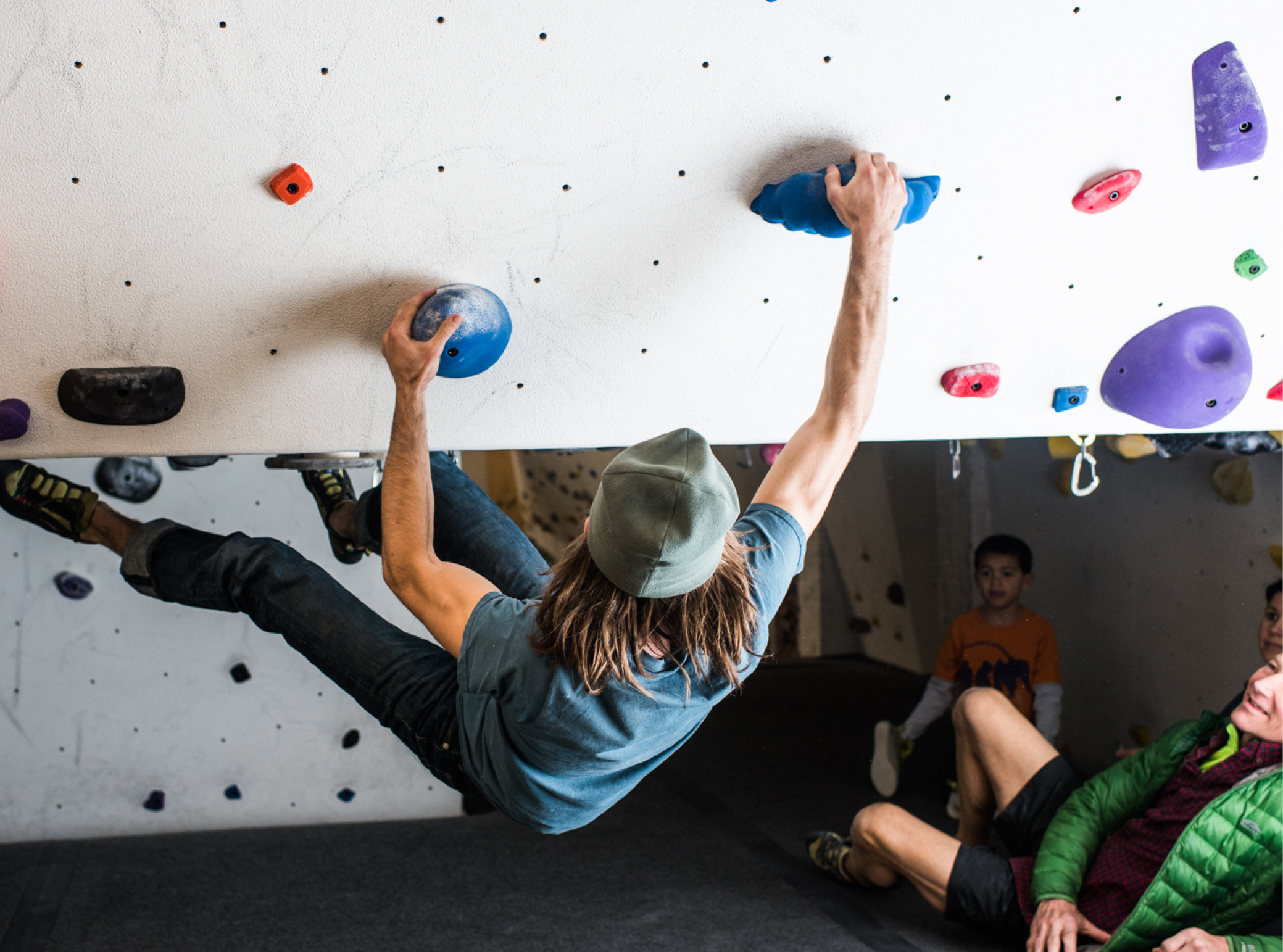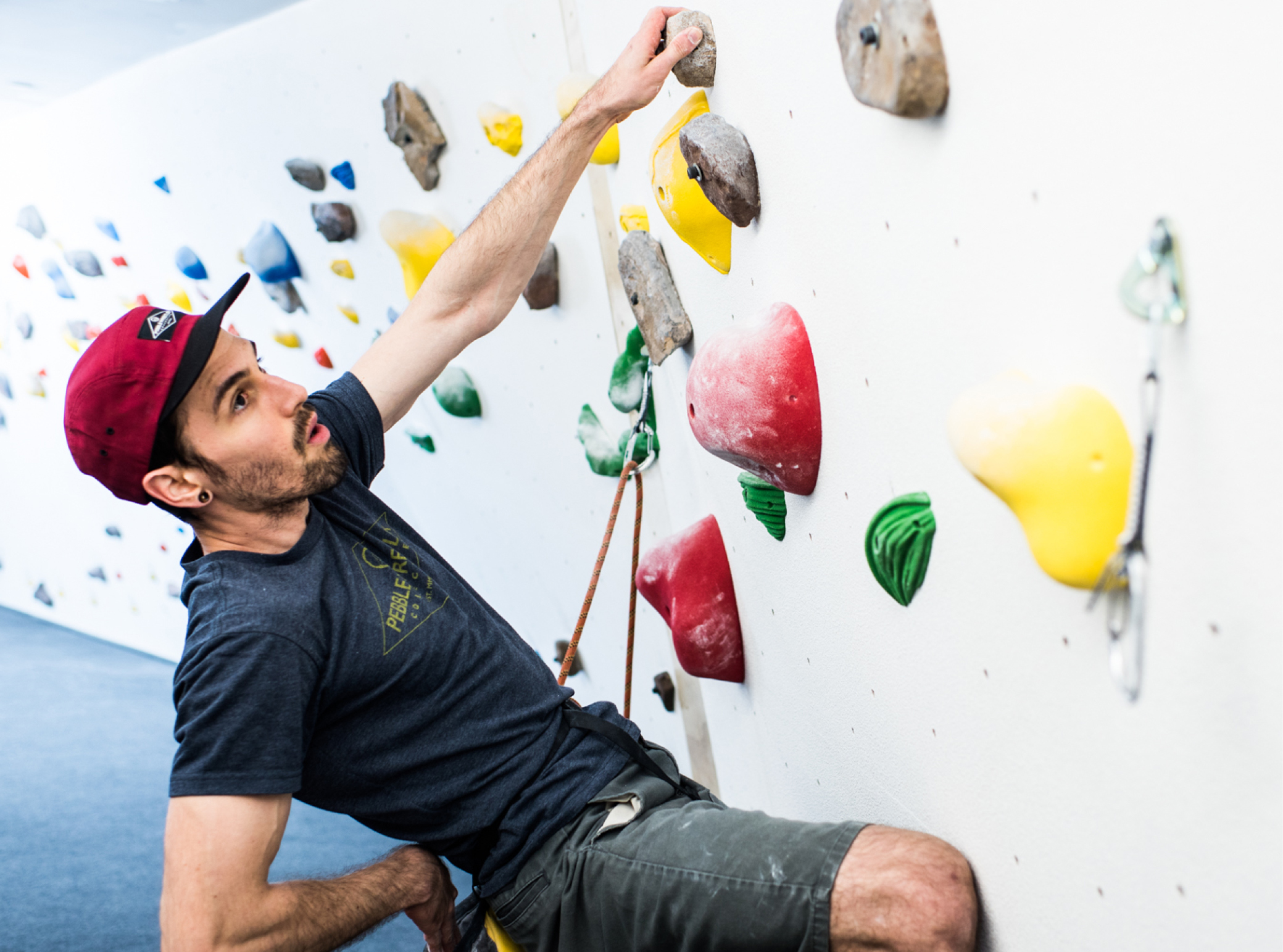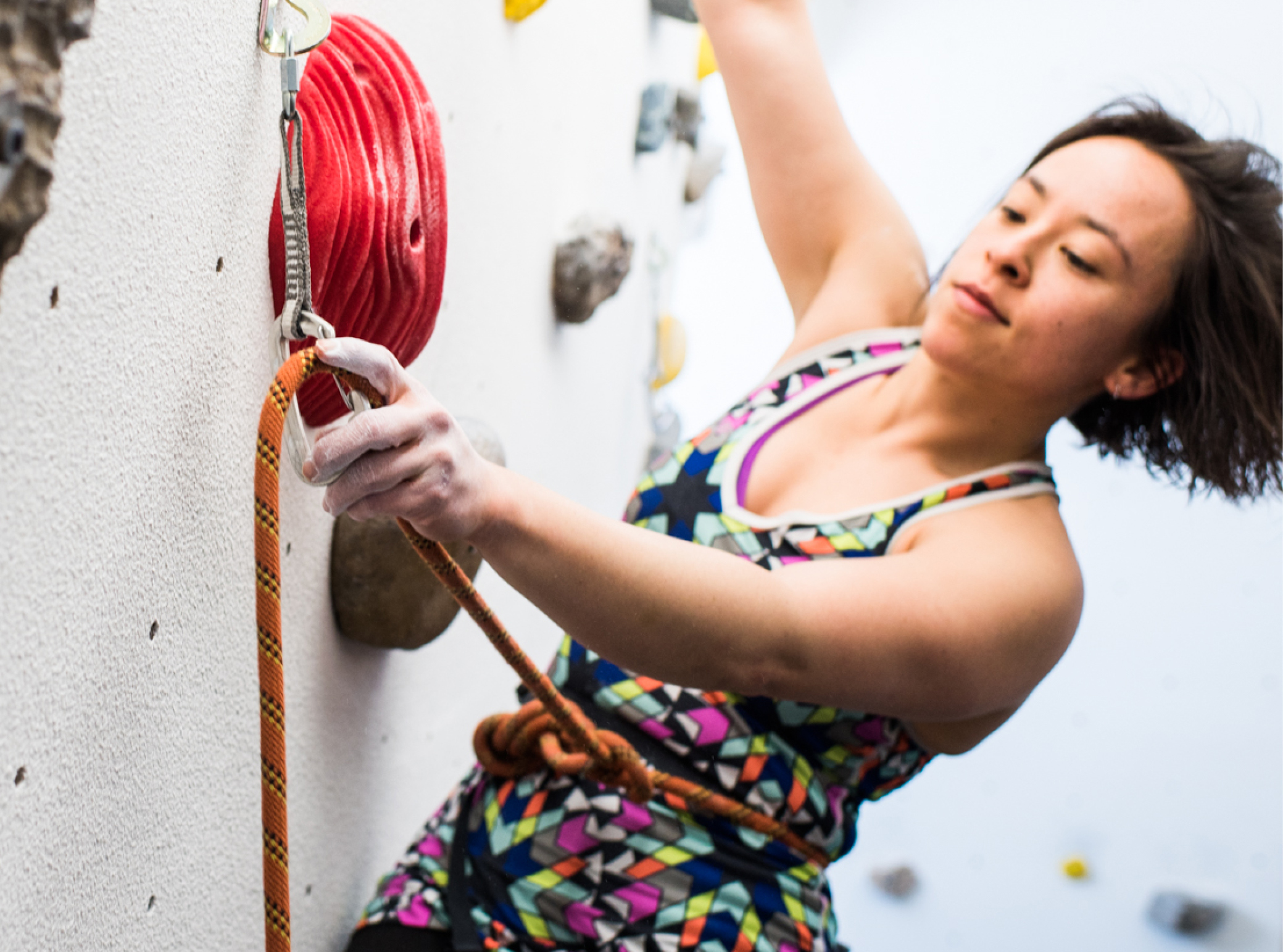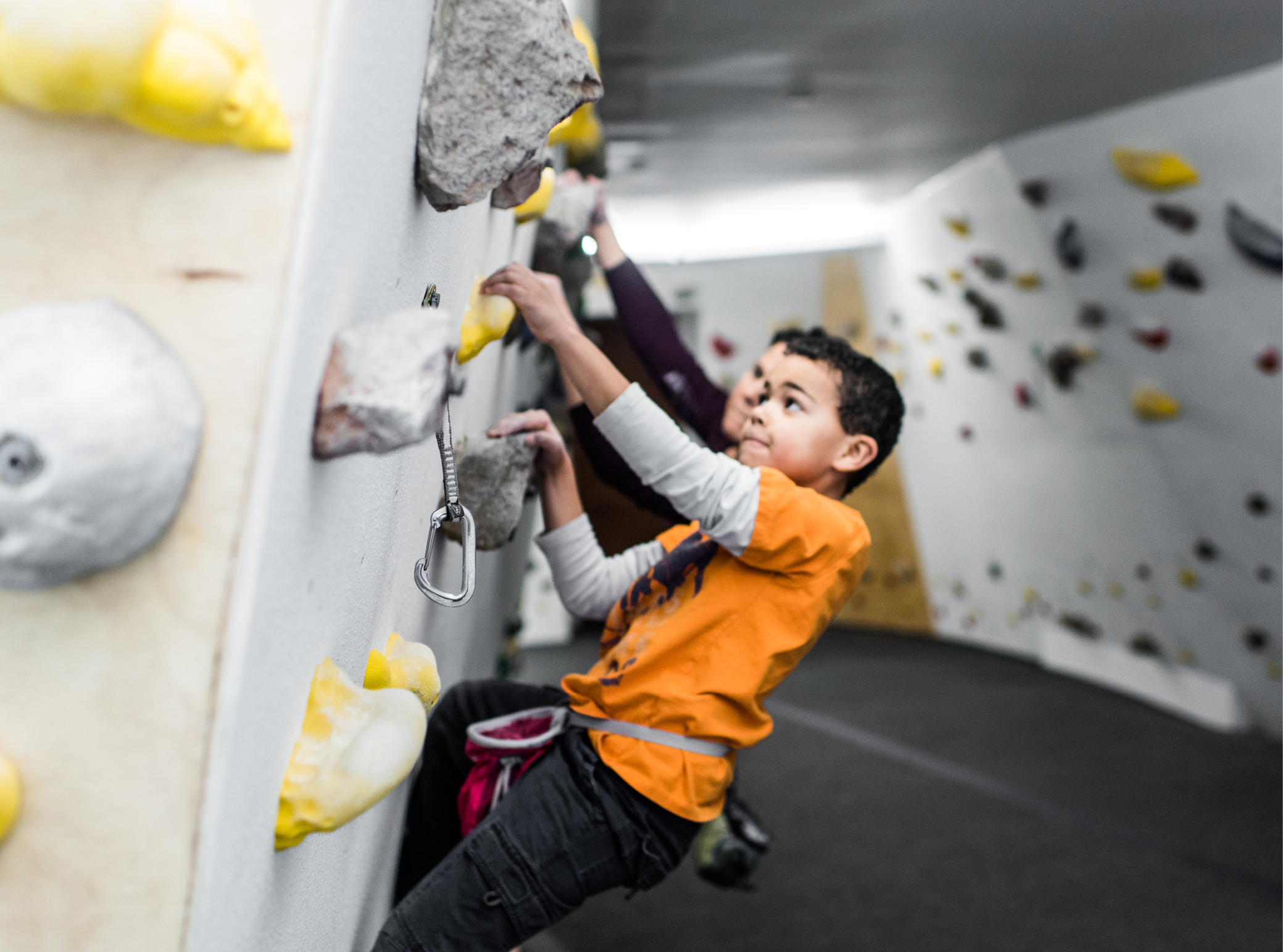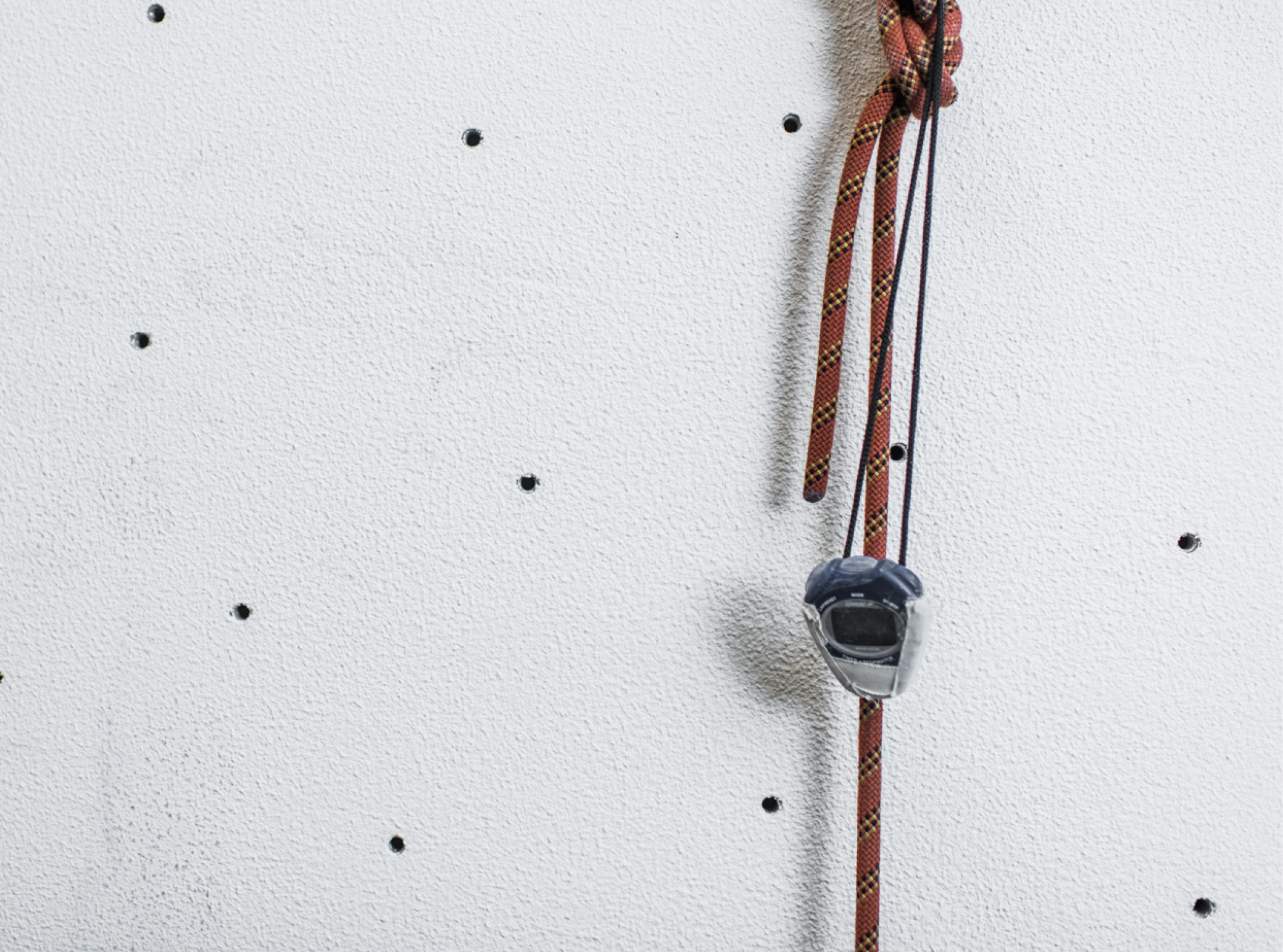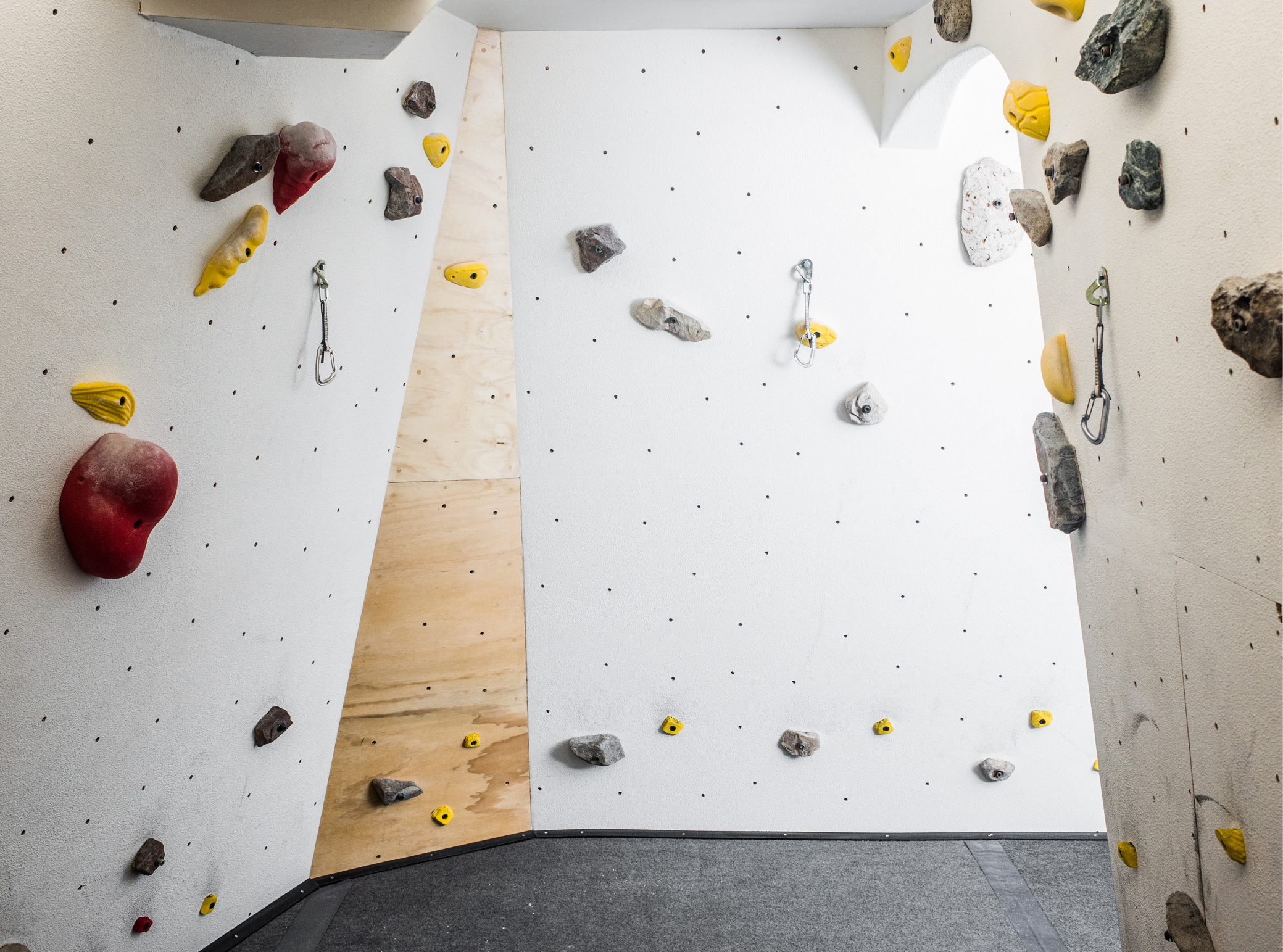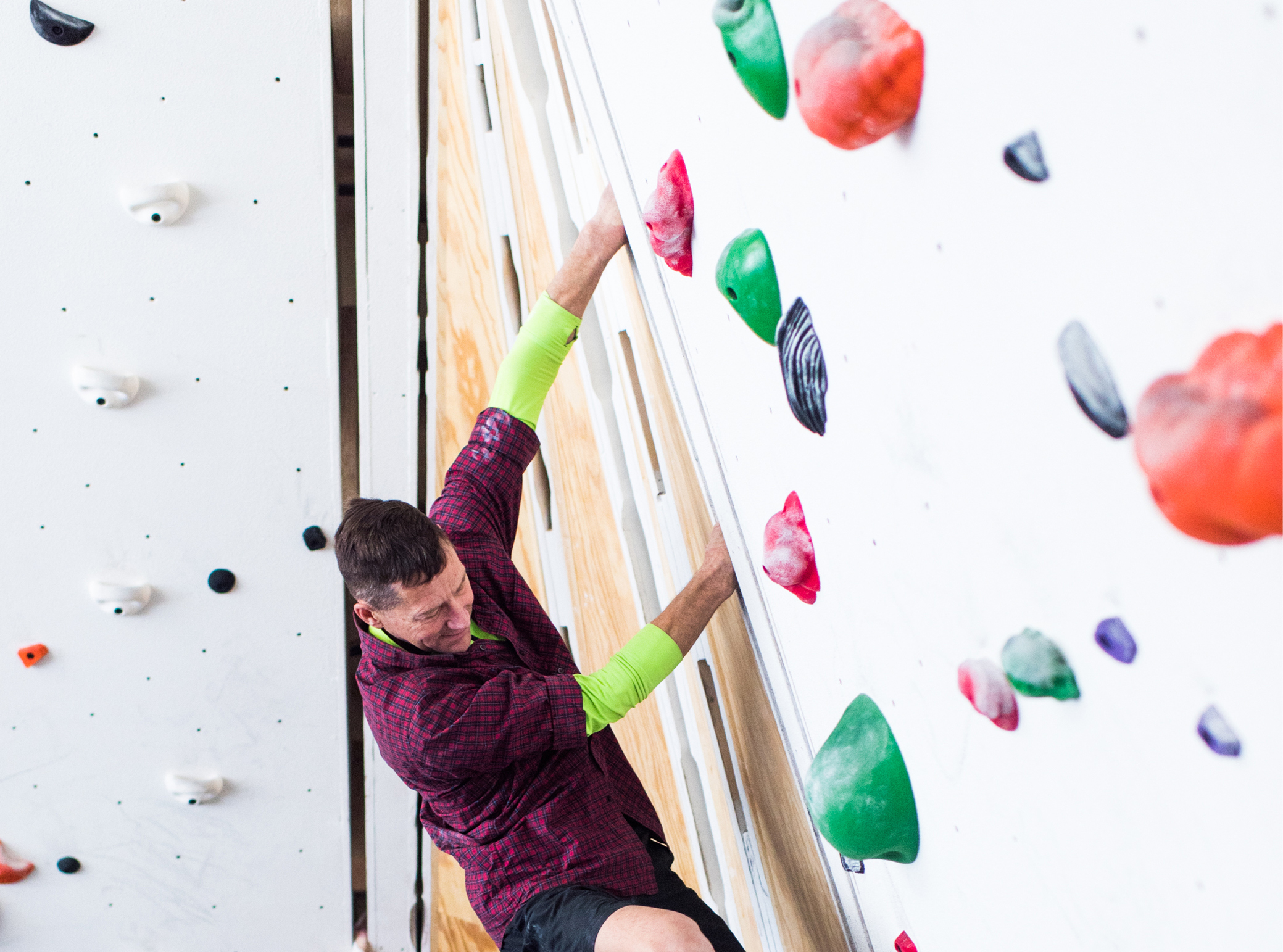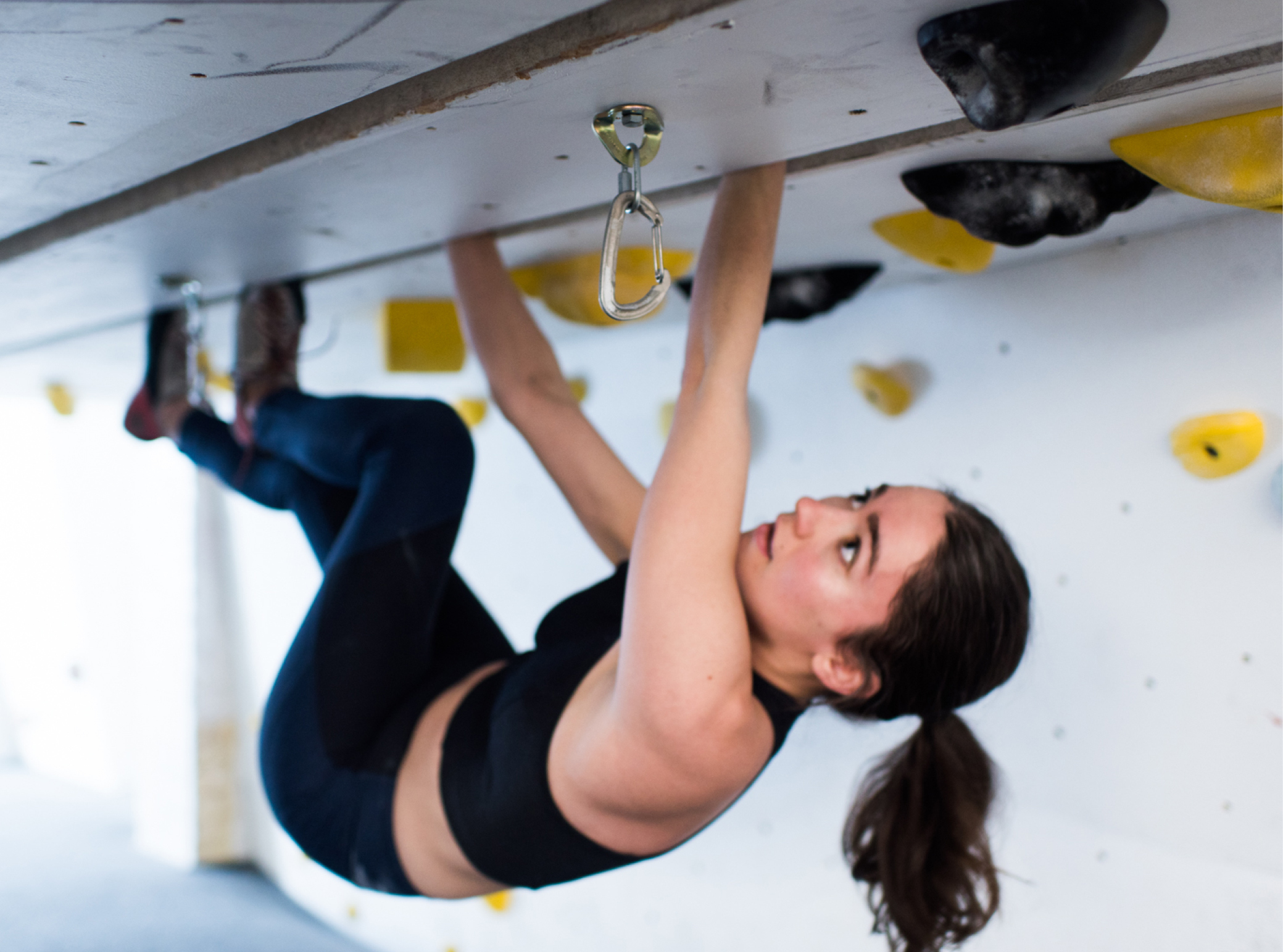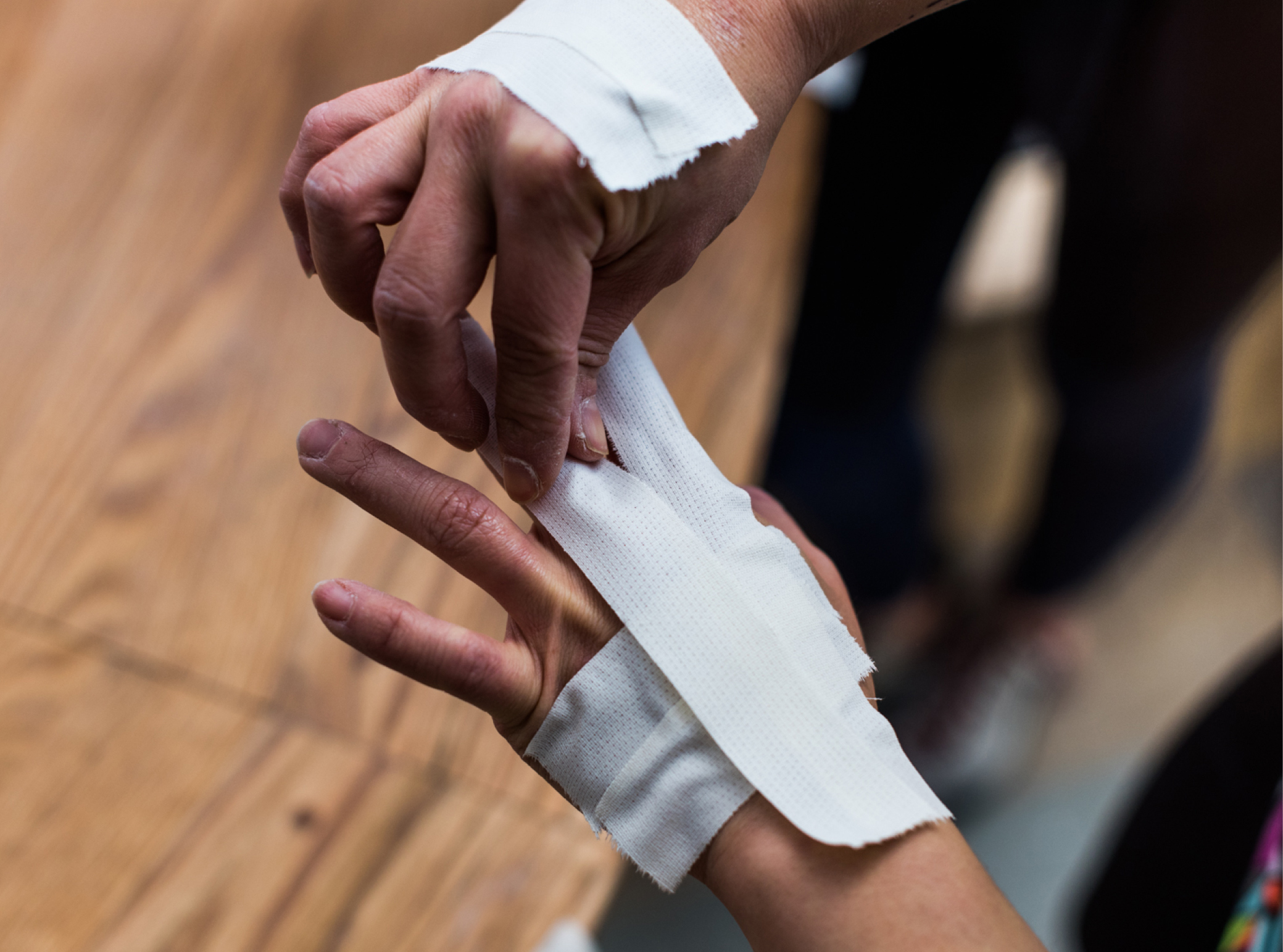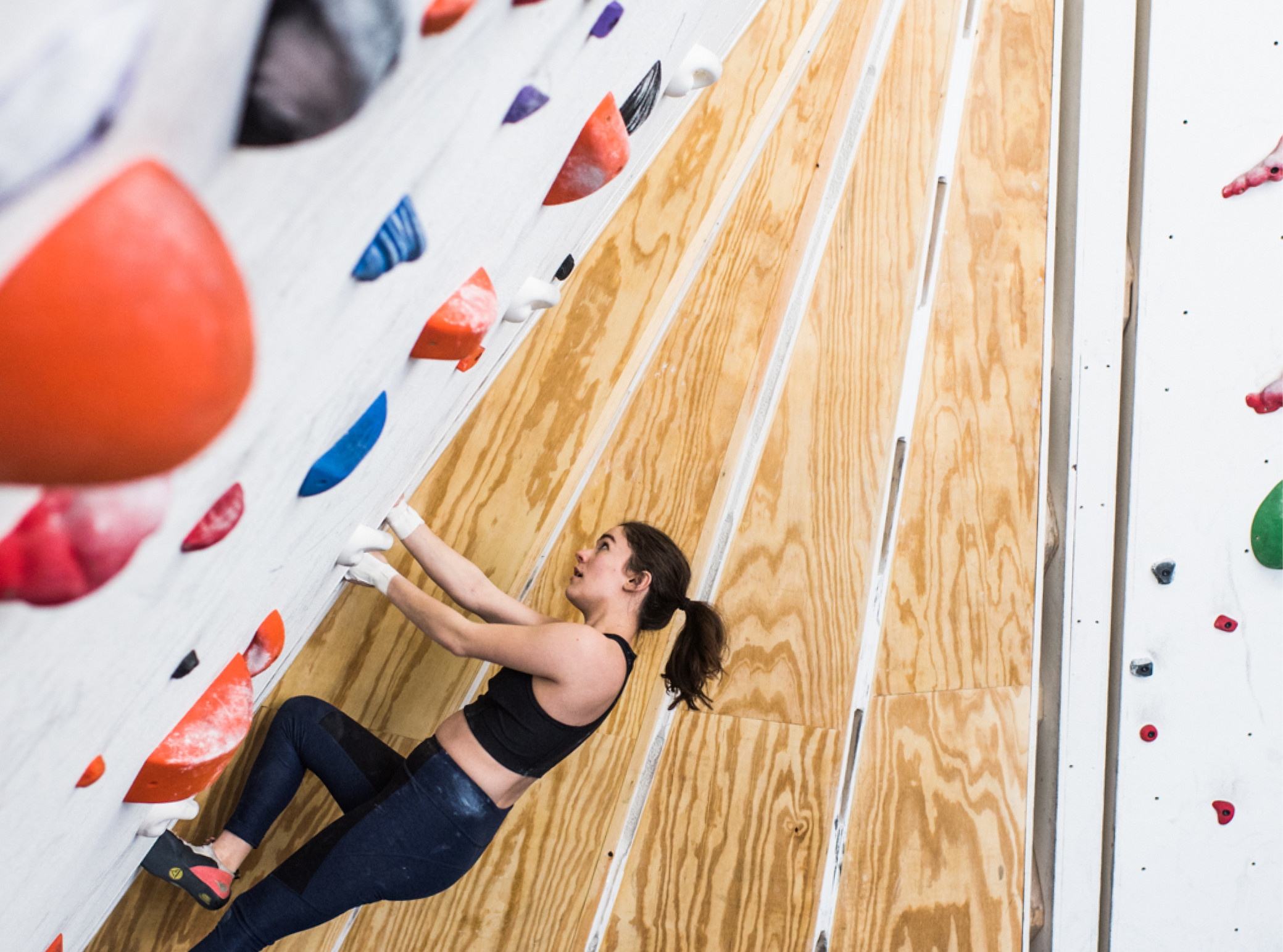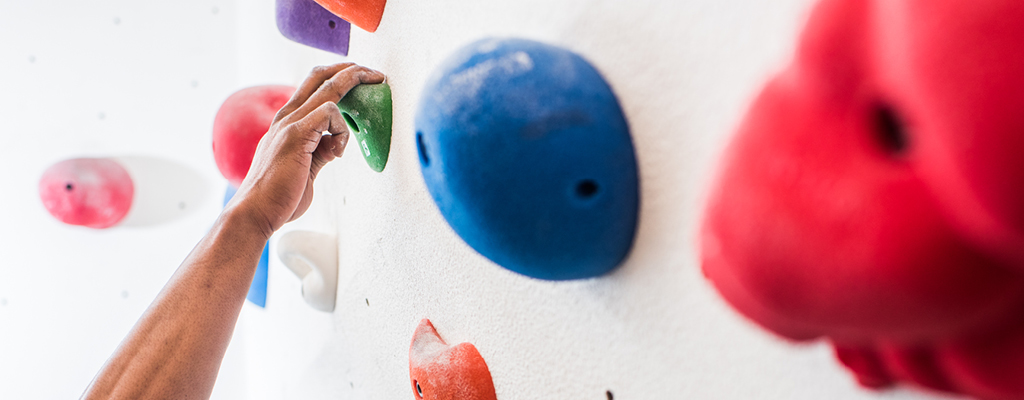
Bouldering
Climb Cleveland is a bouldering gym, which means the height does not exceed 8-12 feet and there are no ropes. Pads are in place to ensure a soft and safe landing.
Falling is inevitable in climbing. It is like breathing in and breathing out; sitting up and standing down. In bouldering there are just holds, the wall and your hands and feet. Individual climbs are color coded to indicate easy climbs from hard climbs. Climb Cleveland uses the official Vermin Bouldering Scale to rate our climbs from V0-V10.
Mock Lead Walls
We built an area in the basement perfect for building your climbing endurance. The purpose is not to climb up and down, but side to side for as long as you can. The climbing structures are interconnected so you can link them together to create a continuous climb of 200 feet or more. We even have real rock holds from all over the country to give you the feel of the rock itself.
We created two mock lead walls. The easier one enables you to practice 50ft. pitches rated 5.8 to 5.10 and the steeper one to practice 100ft. pitches from 5.10+ to 5.13+. These pitches also link with a big roof structure featuring cracks and boulder holds so that you can mix them to create the challenges that fit your own climbing interests. We offer ropes and clips to practice your lead climbing as you traverse around the island or the outer wall.
Crack Climbing
At Climb Cleveland, we love a good crack climb.
Crack climbing is a technique where the climber follows a crack in the rock using either hand jams, finger locks or sometimes even their whole body if the crack is large enough.
We have built various sizes at various levels of steepness for experienced and new crack climbers to challenge themselves. We even have a roof crack. To keep your hands safe we recommend taping. The tape reduces surface level abrasions in the skin and makes for a smoother crack climb. Talk to one of our employees if you want to learn our technique of taping and how to start crack climbing.
We also provide a wide range of crack climbing training. This kind of climbing is a set of specialized techniques used in some eastern US climbs, and is absolutely necessary to succeed in the major western climbing areas of Yosemite, Moab Utah, Joshua Tree and British Columbia.
